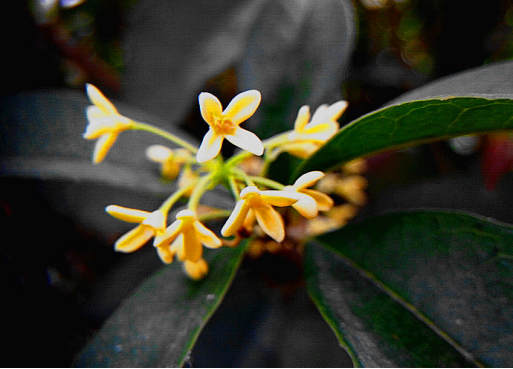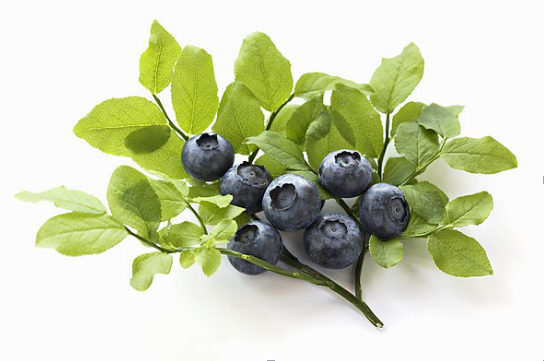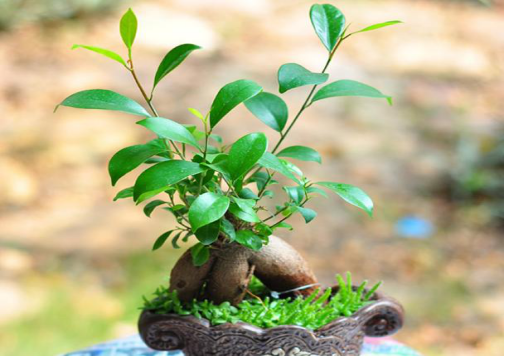Matters needing attention in the maintenance of four seasons osmanthus
1. Planting time
It should be done in spring or autumn, especially on cloudy or rainy days in these two seasons.
two。 Growing environment
You should choose a warm, well-ventilated, well-lit or semi-overcast environment.
3. Transplant
When transplanting, the soil ball at the root must be played well to ensure its survival rate.
4. Soil quality
Avoid alkaline soil.

After reading the above about the breeding methods and precautions of four seasons cinnamon, do you want to act quickly to let the fragrance of four seasons cinnamon fill your little world? If so, it is necessary to know the current price of four seasons cinnamon in the market.
Matters needing attention in the maintenance of four Seasons Osmanthus prices
Four seasons osmanthus, is what we usually call the four seasons sweet-scented osmanthus, laurel, I believe many friends have smelled its fragrance. No matter in the garden, on the balcony, or on both sides of the road, in the courtyard, it is easy to see the shadow of Quji Gui. Four seasons cinnamon can not only green the environment, its root is also a medicine, has a significant therapeutic effect on toothache and so on. So, is the price of this popular and effective osmanthus high? What is the cost-effective ratio? What should be paid attention to during maintenance?
Four seasons osmanthus, also known as four seasons sweet-scented osmanthus, laurel, is an excellent variety of sweet-scented osmanthus tree, the biggest feature is the four seasons flowering, four seasons fragrance. The fragrance is light in summer and autumn and slightly fragrant in spring and winter. Adapt to a wide range of areas, the northernmost planting can be seen in the middle and lower reaches of the Yellow River, the southernmost can reach Liangguang, and potted plants are more common in the north. Unlike other sweet-scented osmanthus, osmanthus blossoms all the year round. The flowers are yellowish at first, then white and fragrant when they are in full bloom. Each inflorescence consists of 12 to 20 florets with a florescence of 5 to 7 days. The plant of Cinnamomum frutescens is short and its leaves are large and evergreen, which is more suitable for family planting.
The price of four seasons osmanthus can be as low as 20 yuan, and the highest can reach tens of thousands. The following is the quotation of four seasons cinnamon:
Siji Gui Tei diameter 7cm m diameter 5cm height 4 price 600
Siji Gui Tei diameter 12cm m diameter 10cm height 3 Price 2500
Siji Kwai Tei diameter 5cm m diameter 3cm height 2 Price 20
Siji Kwai Tei diameter 25cm m diameter 13cm height 4.5 Price 1200
Siji Gui Tei diameter 50cm m diameter 30cm height 8 Price 40000
The following points should be paid attention to in the process of maintenance:
1. Soil preparation. Cinnamomum chinense is suitable for growing in acid soil with loose and fertile soil and good drainage. Generally, it can be prepared with 60% broad-leaved humus, 25% coniferous humus, 10% river sand or fine furnace ash, and 5% fermented pig manure or chicken manure.
two。 Light. Four seasons osmanthus like light, indoor cultivation should be placed in a sunny and ventilated place, the light should be kept at 8 to 12 hours a day.
3. Temperature. The four seasons osmanthus prefers to be warm, and generally grows well at 18 ℃ to 25 ℃, with many flowers and fragrant flowers. If it is less than 15 ℃, it will be semi-dormant and flowering less. 3 ℃ to 5 ℃ can survive the winter, but cannot blossom.
4. Humidity. The cultivation of four seasons cinnamon should not only keep the basin soil moist, but also should not be waterlogged. When watering, you should see dry and wet, and avoid stagnant water, so as not to rot roots or make leaves fall off. Especially in flowering, water should not be too much, so as not to cause bud drop and affect flowering.
5. Fertilize. Four Seasons Gui like fertilizer, during germination and budding period, more diluted fertilizer and water containing phosphorus and potassium should be applied to make branches and buds grow strong, especially a few days before flowering, applying some diluted fertilizer and water will make the flowers large, colorful and fragrant.
6. Pest control. The main pests of four seasons cinnamon are red spider and mulberry white scale, which can be sprayed with enemy kill mixed with Laifuling.
Although the four seasons osmanthus has no stringent requirements on the growth environment, it still needs careful care, such as temperature, humidity, light, soil, fertilization and insect control. To understand the matters needing attention in maintenance and reflect the value of the landscape, the four Seasons Cinnamon has its unique charm in landscape greening. On the other hand, by pruning the four seasons cinnamon, it can show different artistic shapes, match with some landscapes, and make it more dignified and elegant, pleasing to the eye. While drinking tea, watching and smelling incense at the same time, why not?
Maintenance and management of four seasons osmanthus
Four seasons osmanthus is an excellent variety of sweet-scented osmanthus, which can blossom all the year round. The flowers are yellowish at first, then white and fragrant when they are in full bloom. Each inflorescence consists of 12 to more than 20 florets with a florescence of 5 to 7 days. The plant of Cinnamomum cassia is short, and its leaves are large and evergreen, which is more suitable for family cultivation. The following points should be paid attention to in the process of maintenance:
Soil preparation
Cinnamomum chinense is suitable for growing in acid soil with loose and fertile soil and good drainage. Generally, it can be prepared with 60% broad-leaf humus, 25% coniferous humus, 10% river sand or fine furnace ash, mixed with 5% fermented pig manure or chicken manure.
Light
Gui Xi light of the four seasons, indoor cultivation should be placed in a sunny and ventilated place, and the light should be kept at about 8 hours a day.
Temperature
The four seasons like to be warm, and the suitable temperature for growth is from 18 ℃ to 25 ℃. If the temperature is lower than 15 ℃, it is in a semi-dormant state. The temperature ranges from 3 ℃ to 5 ℃ can survive the winter, but can not blossom.
Humidity
The cultivation of four seasons cinnamon should not only keep the basin soil moist, but also should not be waterlogged. When watering, you should see dry and wet, and avoid stagnant water, so as not to rot roots or make leaves fall off. Especially in flowering, watering should not be too much, otherwise it will cause falling buds to affect flowering.
Fertilizer application
Four Seasons Gui like fertilizer, during germination and budding, more diluted fertilizer and water containing phosphorus and potassium should be applied to make branches and buds grow strong and luxuriant, especially a few days before flowering, applying some diluted fertilizer and water will make the flowers big, colorful and fragrant.
Pest control
The main pests of four seasons cinnamon are red spider and mulberry white scale, which can be sprayed with enemy kill mixed with Laifuling.
- Prev

Propagation of blueberries
Cutting is the main propagation method of blueberry. The following points should be paid attention to when cutting: first, the selection of cuttings should be carried out when sprouting in spring, and it is suitable to choose branches that grow healthily and are free of diseases and insect pests for 1-2 years. When cutting, the middle and lower parts of the branches should be selected as far as possible, and the length of the cuttings is about 30 cm.
- Next

Inducement-- the reason for the loss of leaves of ginseng banyan
1. Normal phenomenon: if it is a newly bought ginseng banyan leaves, there is no need to worry too much, because this is the ginseng banyan to adapt to the new environment, is a normal phenomenon, let it slowly slow down the seedlings. two。 Growth habits: ginseng banyan is native to tropical rain forest areas with high temperature, rainy climate and humid climate
Related
- Fuxing push coffee new agricultural production and marketing class: lack of small-scale processing plants
- Jujube rice field leisure farm deep ploughing Yilan for five years to create a space for organic food and play
- Nongyu Farm-A trial of organic papaya for brave women with advanced technology
- Four points for attention in the prevention and control of diseases and insect pests of edible fungi
- How to add nutrient solution to Edible Fungi
- Is there any good way to control edible fungus mites?
- Open Inoculation Technology of Edible Fungi
- Is there any clever way to use fertilizer for edible fungus in winter?
- What agents are used to kill the pathogens of edible fungi in the mushroom shed?
- Rapid drying of Edible Fungi

